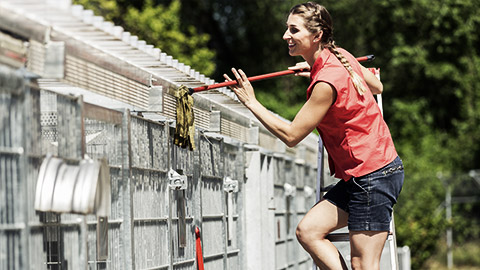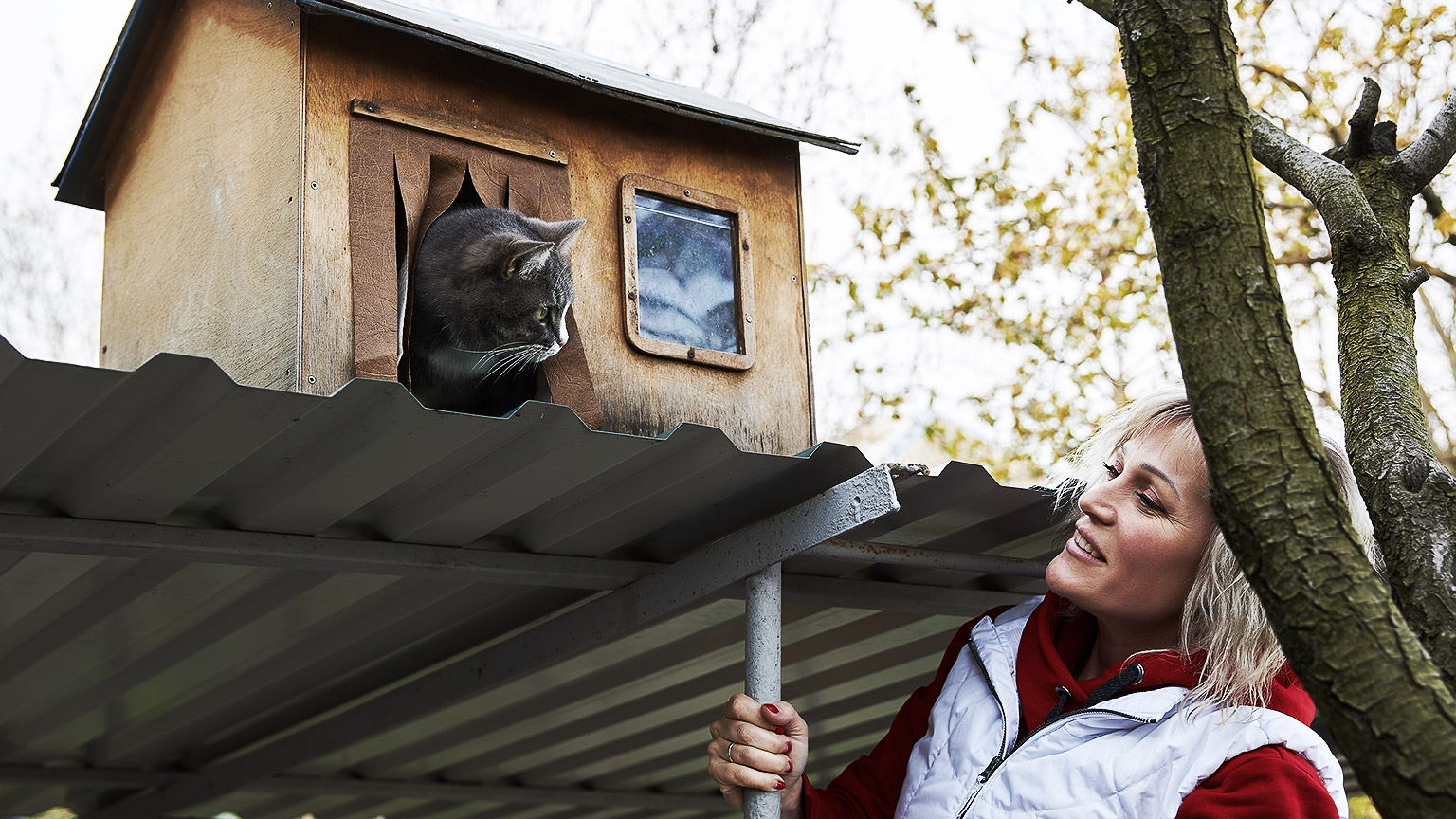Mandy works for the local council in their animal welfare shelter as an animal control officer. This shelter is responsible for housing animals who have been surrendered, found wandering stray, or have been rescued from unfit homes. The ultimate goal of the shelter is to return the animals to good health and then find new homes for them. Occasionally they do have to euthanise animals, particularly if they are very ill, injured, or old. The majority of the animals that Mandy looks after are dogs and cats.
Why is good hygiene important in an animal shelter?
We have lots and lots of animals in our facility and because they are housed quite close together there is a very big risk of contamination and illness if we don't maintain good hygiene. Certain diseases like Bordetella otherwise known as canine cough and feline influenza are very common here and we must observe the animals and quarantine the sick ones immediately.
Also, many of the animals arrive at our facility in terrible condition, their coats will be dirty and mattered and their claws need to be trimmed. Pet hygiene involves grooming and we spend time ensuring they are brushed and clipped regularly. This also helps with adoption prospects.
What are your main hygiene-related duties?

Cleaning the cages and outdoor enclosures several times a day, animals tend to poop a lot! They also make a mess with the food and spill their water which needs to be cleaned up.
Every morning we complete a full cleaning routine whereby we remove any soiled bedding, wipe, mop or hose out the cages or enclosures and clean all the food and water dishes. Then the animals are fed and watered. We have to monitor each animal to ensure they are eating and drinking adequately as it can be a sign of stress or illness if they are off their food.
Any new arrivals are given a medical examination by our veterinarian which I might assist with. During this examination, we take note of any pre-existing conditions that may require treatment or quarantine. After the examination, I will usually groom and bathe the animal if its coat is in poor condition and treat any minor conditions such as fleas.
If we are doing any medical or surgical procedures there are other hygiene-related tasks, mainly regarding preparing the treatment area. Equipment needs to be sterilised and the animal may need to be clipped in preparation for the procedure.
What are the main challenges you face?
Mainly a lack of time and low staff numbers. Due to the size of the shelter and the number of animals, there is always something that needs to be attended to. There is no time for dawdling or for extended one-on-one time with any animal, which means that some of the animals get a bit lonely and restless, especially the dogs.
When we have adoption viewing times, we have to ensure that members of the public are safe and that they don't potentially contaminate any of the animals. This means a lot of handwashing for us and the visitors, it always amazes me that people don't know how to wash and sanitise their hands properly.
Another challenge is ensuring that contagious illness doesn't spread through the facility, this usually involves a period of quarantine for any affected animals and strict adherence to medical treatments and hygiene routines. It also means that those animals can't be adopted during that time, so we really work to keep illness to a minimum to avoid overcrowding in the shelter.
What is the best part of your job?

Definitely when an animal is adopted by a caring person or family. Especially if that animal arrived at our shelter in a very poor condition and we all worked hard to improve its health and hygiene to the point where someone chose to adopt. We sometimes take before and after photos of some of the worst cases, and the transformations can be amazing. It's amazing what good nutrition, regular hygiene and grooming can achieve, oh and a bit of love and cuddles as well.
